The average cost of Breast Augmentation in Israel starts from ILS 45600 (USD 12000)
Breast Augmentation, also known as augmentation mammoplasty, is a surgical procedure done to increase breast size and involves placing breast implants under the breast tissue or chest muscles. Breast Augmentation, for some women, is a way to feel more confident and attractive while for others it helps in rebuilding or reconstructing the breasts for various conditions.
As the first step for someone considering breast augmentation, one must visit the surgeon to understand what would the procedure involve, the possible risks, complications, and follow-ups.
The average cost of breast augmentation in Israel is $12000, the minimum cost is $9000, and the maximum cost is $15000.
| Country | Cost | Local_currency |
|---|---|---|
| Czechia | USD 4000 | Czechia 90760 |
| Greece | USD 4050 | Greece 3726 |
| Hungary | USD 4000 | Hungary 1394240 |
| India | USD 2290 | India 190414 |
| Israel | USD 12000 | Israel 45600 |
| Lebanon | USD 4000 | Lebanon 60022200 |
| Lithuania | USD 2550 | Lithuania 2346 |
| Malaysia | USD 5650 | Malaysia 26612 |
| Morocco | USD 4000 | Morocco 40160 |
| Poland | USD 3190 | Poland 12888 |
| South Korea | USD 8000 | South Korea 10741520 |
| Spain | USD 8090 | Spain 7443 |
| Switzerland | USD 14000 | Switzerland 12040 |
| Thailand | USD 6170 | Thailand 219960 |
| Tunisia | USD 4800 | Tunisia 14928 |
| Turkey | USD 5440 | Turkey 163962 |
| United Arab Emirates | USD 7060 | United Arab Emirates 25910 |
| United Kingdom | USD 6000 | United Kingdom 4740 |
Treatment cost
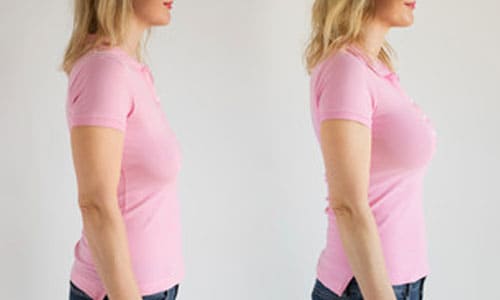
Some of the key inclusions which we provide as additional benefits of the package are:
With us, you are sure to receive all the benefits at competitive prices which is a better choice than paying actual hospital costs. When a patient wishes to increase the size of their breasts, the procedure which helps them do so is known as Breast Augmentation surgery. Another name for this procedure is Augmentation Mammoplasty. Breast implants are placed right under chest muscles or breast tissue., Our package offering in coordination with DBest Clinic in Turkey is a great attraction for people wanting to get this procedure done.
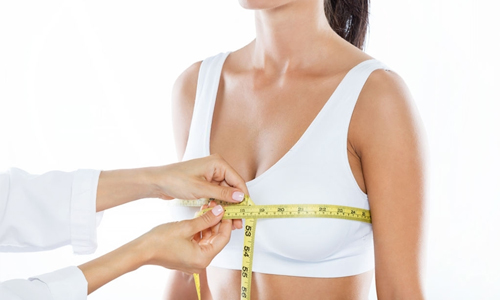
We provide numerous services for your medical journey, including:
We offer packages at reasonable pricing that include a variety of additional advantages, making it a better deal than paying for individual perks at the hospital. When a patient wishes to increase the size of their breasts, the procedure which helps them do so is known as Breast Augmentation surgery. Another name for this procedure is Augmentation Mammoplasty. Breast implants are placed right under chest muscles or breast tissue., Our package offering in coordination with NMC Royal Hospital, DIP in United Arab Emirates is a great attraction for people wanting to get this procedure done.
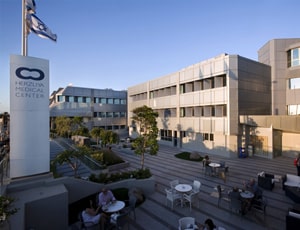
Apart from in-detail treatment procedures available, Herzliya Medical Center located in Herzliya, Israel has a wide variety of facilities available for International Patients. Some of the facilities which are provided by them are Accommodation, Airport Transfer, Interpreter, SIM, TV inside room. Also listed below are some of the most prominent infrastructural details:
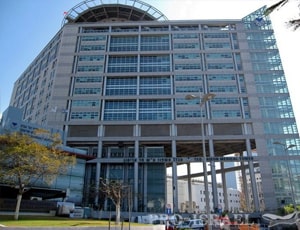
Tel Aviv Sourasky Medical Center -Ichilov Hospital located in Tel-Aviv, Israel is accredited by JCI. Also listed below are some of the most prominent infrastructural details:
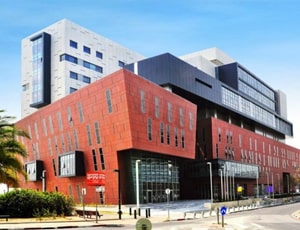
Assuta Hospital located in Tel-Aviv, Israel is accredited by JCI. Also listed below are some of the most prominent infrastructural details:

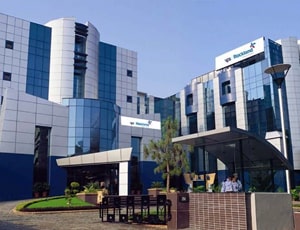
Types of Breast Augmentation in Medeor Hospital and its associated cost
| Treatment Option | Approximate Cost Range (USD) | Approximate Cost Range (INR) |
|---|---|---|
| Breast Augmentation (Overall) | 2622 - 5093 | 216104 - 416363 |
| Silicone Implants | 2621 - 4346 | 215198 - 357640 |
| Saline Implants | 2691 - 4452 | 220107 - 365102 |
| Gummy Bear Implants | 2744 - 4588 | 223971 - 376083 |
| Fat Transfer (Natural Augmentation) | 2839 - 5052 | 231962 - 414856 |
DOCTORS IN 13 SPECIALITIES
FACILITIES & AMENITIES
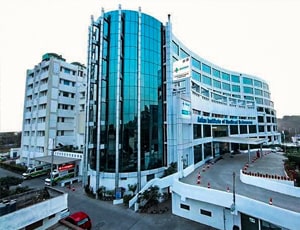
Types of Breast Augmentation in Asian Institute of Medical Sciences and its associated cost
| Treatment Option | Approximate Cost Range (USD) | Approximate Cost Range (INR) |
|---|---|---|
| Breast Augmentation (Overall) | 2619 - 5058 | 216495 - 415228 |
| Silicone Implants | 2641 - 4352 | 216511 - 359634 |
| Saline Implants | 2692 - 4457 | 220844 - 365469 |
| Gummy Bear Implants | 2742 - 4557 | 224595 - 374745 |
| Fat Transfer (Natural Augmentation) | 2849 - 5084 | 233859 - 417054 |
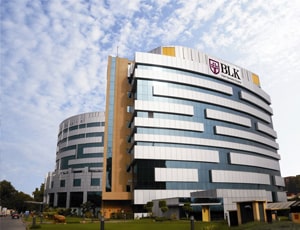
The cost for Breast Augmentation ranges from USD 4840 - 5200 in BLK-Max Super Speciality Hospital
BLK-Max Super Speciality Hospital located in New Delhi, India is accredited by NABL. Also listed below are some of the most prominent infrastructural details:
DOCTORS IN 15 SPECIALITIES
FACILITIES & AMENITIES
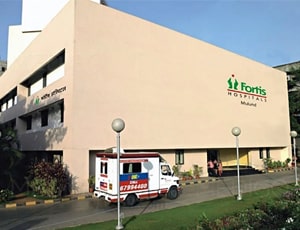
Types of Breast Augmentation in Fortis Hospital, Mulund and its associated cost
| Treatment Option | Approximate Cost Range (USD) | Approximate Cost Range (INR) |
|---|---|---|
| Breast Augmentation (Overall) | 2954 - 5648 | 242694 - 451141 |
| Silicone Implants | 2882 - 4799 | 234806 - 391759 |
| Saline Implants | 2972 - 4870 | 249128 - 408660 |
| Gummy Bear Implants | 3059 - 5120 | 246889 - 407638 |
| Fat Transfer (Natural Augmentation) | 3080 - 5529 | 257224 - 461670 |
DOCTORS IN 13 SPECIALITIES
FACILITIES & AMENITIES
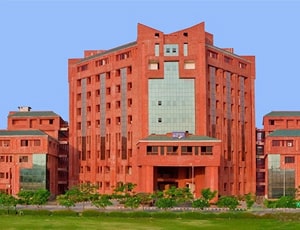
Types of Breast Augmentation in Sharda Hospital and its associated cost
| Treatment Option | Approximate Cost Range (USD) | Approximate Cost Range (INR) |
|---|---|---|
| Breast Augmentation (Overall) | 2397 - 4733 | 197995 - 383522 |
| Silicone Implants | 2400 - 3990 | 198183 - 324922 |
| Saline Implants | 2511 - 4159 | 200264 - 338947 |
| Gummy Bear Implants | 2488 - 4204 | 208450 - 348057 |
| Fat Transfer (Natural Augmentation) | 2620 - 4621 | 216540 - 386271 |
DOCTORS IN 12 SPECIALITIES
FACILITIES & AMENITIES
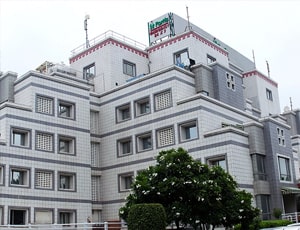
Types of Breast Augmentation in Fortis Flt. Lt. Rajan Dhall Hospital and its associated cost
| Treatment Option | Approximate Cost Range (USD) | Approximate Cost Range (INR) |
|---|---|---|
| Breast Augmentation (Overall) | 2629 - 5095 | 216376 - 414407 |
| Silicone Implants | 2641 - 4367 | 214950 - 356596 |
| Saline Implants | 2691 - 4457 | 221482 - 364452 |
| Gummy Bear Implants | 2738 - 4573 | 225561 - 373570 |
| Fat Transfer (Natural Augmentation) | 2850 - 5072 | 232904 - 415072 |
DOCTORS IN 11 SPECIALITIES
FACILITIES & AMENITIES
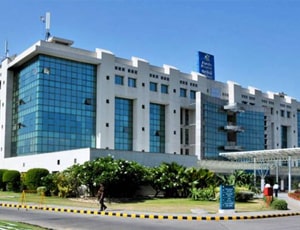
Types of Breast Augmentation in Apollo Hospital International Limited and its associated cost
| Treatment Option | Approximate Cost Range (USD) | Approximate Cost Range (INR) |
|---|---|---|
| Breast Augmentation (Overall) | 2627 - 5100 | 215692 - 415328 |
| Silicone Implants | 2621 - 4378 | 216314 - 358285 |
| Saline Implants | 2682 - 4455 | 220216 - 367667 |
| Gummy Bear Implants | 2747 - 4545 | 224399 - 376206 |
| Fat Transfer (Natural Augmentation) | 2843 - 5093 | 232026 - 416909 |
DOCTORS IN 13 SPECIALITIES
FACILITIES & AMENITIES
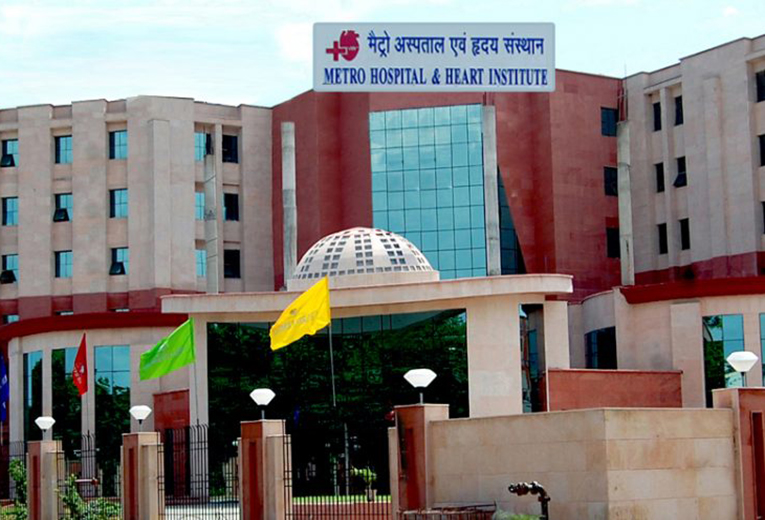
Types of Breast Augmentation in Metro Hospital and its associated cost
| Treatment Option | Approximate Cost Range (USD) | Approximate Cost Range (INR) |
|---|---|---|
| Breast Augmentation (Overall) | 2460 - 4741 | 198790 - 384431 |
| Silicone Implants | 2448 - 3977 | 197269 - 327713 |
| Saline Implants | 2451 - 4159 | 204563 - 334262 |
| Gummy Bear Implants | 2544 - 4160 | 208057 - 345860 |
| Fat Transfer (Natural Augmentation) | 2619 - 4619 | 211358 - 383007 |
DOCTORS IN 12 SPECIALITIES
FACILITIES & AMENITIES
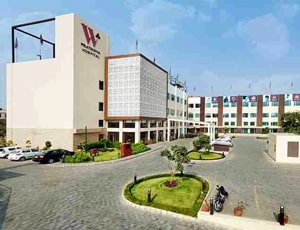
Types of Breast Augmentation in W Pratiksha Hospital and its associated cost
| Treatment Option | Approximate Cost Range (USD) | Approximate Cost Range (INR) |
|---|---|---|
| Breast Augmentation (Overall) | 2447 - 4654 | 199624 - 384266 |
| Silicone Implants | 2447 - 3970 | 200786 - 331338 |
| Saline Implants | 2492 - 4179 | 204018 - 333706 |
| Gummy Bear Implants | 2495 - 4160 | 207617 - 347376 |
| Fat Transfer (Natural Augmentation) | 2631 - 4748 | 215327 - 387976 |
DOCTORS IN 12 SPECIALITIES
FACILITIES & AMENITIES

Dr. Rose Private Hospital located in Budapest, Hungary is accredited by JCI. Also listed below are some of the most prominent infrastructural details:
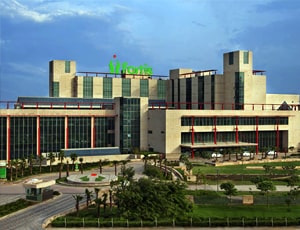
The cost for Breast Augmentation ranges from USD 4420 - 4620 in Fortis Memorial Research Institute
Fortis Memorial Research Institute located in Gurugram, India is accredited by JCI, NABH. Also listed below are some of the most prominent infrastructural details:
DOCTORS IN 14 SPECIALITIES
FACILITIES & AMENITIES
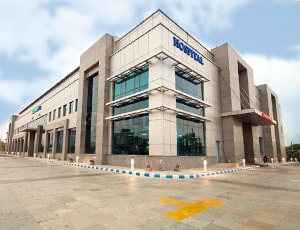
Types of Breast Augmentation in Manipal Hospital, Gurugram and its associated cost
| Treatment Option | Approximate Cost Range (USD) | Approximate Cost Range (INR) |
|---|---|---|
| Breast Augmentation (Overall) | 2637 - 5088 | 216262 - 415023 |
| Silicone Implants | 2641 - 4351 | 215189 - 358167 |
| Saline Implants | 2699 - 4470 | 219606 - 366898 |
| Gummy Bear Implants | 2749 - 4548 | 224700 - 375760 |
| Fat Transfer (Natural Augmentation) | 2833 - 5098 | 232024 - 414759 |
DOCTORS IN 13 SPECIALITIES
FACILITIES & AMENITIES
The idea of youthfulness for women has been fairly associated with how well structured their breasts are. But with time and because of several other reasons, the breasts may start drooping. This may diminish physical appeal and self-confidence.
There are many women in the fashion and entertainment industry who often go for breast augmentation surgery or mammoplasty to enhance their appearance. Many other women who feel low due to small breast size or drooping breasts undergo breast augmentation to feel better.
Women with bigger breasts, on the other hand, may decide to undergo a breast reduction. Breast reduction is also known as reduction mammoplasty.
Some of the reasons why a woman may decide to undergo breast augmentation include the following:
Drooping breasts or small-sized breasts can be a real problem when it comes to wearing clothes. A woman may also feel uncomfortable due to the non-uniformity of the two breasts or may feel heavy at times.
Breast augmentation is the second most popular surgical procedure performed on women in the US. Silicone implants or many other kinds of gel-filled or saline-filled implants are inserted in the breast pocket to augment their size and make it look fuller and appealing.
Firstly, an incision is made in the skin covering the breast and the underlying tissue region. A pocket is created within the tissue region to place the breast implant.
All kinds of breast implants that are available have a filling material covered by an outer shell, which is composed of silicone elastomer. They are available in different shapes such as circular, oval directed projection-type or contoured-type. The latter types are called anatomic implants with tapering tips and fuller size at the bottom. The shape of these implants closely resembles the natural shape of the breasts of a fully grown mature woman.
The movement, weight, and feel of silicone gel-filled implants are very similar to that of natural breasts. The modern generation gel-type implants have a thick viscous fluid called a cohesive gel that always stays in place even if the outer shell gets damaged. Gel implants come pre-filled and sealed and as a result, they cannot be adjusted further in the operating room.
Postoperative discomfort will be pertinent in this case. The recovery period can also be long in this case. The ability to have the upper breasts filled centrally will be less.
Recovery after breast enlargement depends on a number of factors such as the elasticity of the breast tissues, the size of the implant, position of the implant, and whether it is under or on top of the muscle. In case the implant has been placed on top of the muscle, pain is minimal and recovery period does not stretch beyond two days. A patient who has had implants placed under the muscle can experience some pain and may take longer to recover.
It is advisable to abstain from lifting activities or any other strenuous activity for the next two weeks. Retention of fluid and subsequent swelling can be avoided by doing so.
Keep taking the drugs prescribed by the surgeon but refrain from using them beyond the advised dosage even if the pain is bothering. Contact the surgeon immediately if you experience some other discomfort, including swelling, bleeding, fever, or inflammation.
Ask your healthcare adviser for the best multiple options and choose the one that meets your expectations
The minimum cost of Breast Augmentation in Israel is about USD$ 12000. Breast Augmentation in Israel is available across many hospitals in different states.
Different hospitals have different pricing policy when it comes to the cost of Breast Augmentation in Israel. The Breast Augmentation package cost usually includes all the expenses related to pre and post surgery expenses of the patient. The Breast Augmentation package in Israel includes the fees of the surgeon, hospitalization and anesthesia as well. Post-surgical complications, new findings and delayed recovery may have an impact on the total Breast Augmentation cost in Israel.
There are several best hospitals for Breast Augmentation in Israel. Some of the most renowned hospitals for Breast Augmentation in Israel include the following:
After Breast Augmentation in Israel, the patient is supposed to stay in guest house for another 10 days. This duration of stay is recommended to complete all the necessary follow-ups and control tests to ensure that the surgery was successful.
Israel is one of the most popular countries for Breast Augmentation in the world. The country offers the best treatment of Breast Augmentation, best doctors, and advanced hospital infrastructure. Some of the other top destinations for Breast Augmentation include the following:
Apart from the Breast Augmentation cost, the patient may have to pay for additional daily expenses such as for guest house after discharge and meals. The per day extra expenses in Israel per person is about USD$ 75
Breast Augmentation in Israel is offered in almost all metropolitan cities, including the following:
After the Breast Augmentation takes place, the average duration of stay at the hospital is about 1 days. During the recovery, the patient is carefully monitored and control tests are performed to see that everything is okay. If required, physiotherapy sessions are also planned during recovery in hospital.
There are about 3 Breast Augmentation hospitals in Israel that are best known for their services. These hospitals are approved to perform the surgery and have proper infrastructure to handle Breast Augmentation patients.
Breast augmentation falls under the category of cosmetic and aesthetic surgeries. It is a term collectively used for procedures that improve the size and shape of breasts. Such procedures are either elective (often self indicated to improve one’s appearance as per desires) or could be a part of reconstructive surgeries - for example in patients who have undergone mastectomy (breast removal procedure).
Israel is a country that has top-rated surgeons when it comes to breast augmentation in Israel and cosmetic surgeries in general. Most of them are trained from western and European countries and strictly follow the guidelines in order to provide a perfect outcome - not only in accordance with the patient's satisfaction but also in the interest of long term results. They are famous for the teardrop implants over the traditional round implants, which mimic the original structure of the breast and caters to a patient population that has a requirement for more natural-looking breasts with some form of enhancement. B-lite is a new development in the world of breast augmentation in Israel, it is the first lightweight breast implant developed by two brothers from Israel. It is 30% less by weight than the normal implants and reduces the effect of gravitational force as the women age.
The breast augmentation cost in Israel is around USD 5700 dollars and ranges between USD 4700 dollars to 6600 dollars. Although the above - mentioned price differs from individual to individual depending upon the preferred procedure, this country has hospitals that offer additional benefits to the international patients when compared to other countries, by arranging an airport pick up, providing transportation from hotel to clinic, easy and pre-arranged accommodation, case managers and translators for transparency throughout the treatment period.
Breast augmentation has always been the most popular cosmetic surgery, studies show that there is a 98% success rate for breast augmentation in general and most of the women who underwent breast augmentation surgery in Israel feel more feminine and confident. The advanced techniques have not only increased the success rate of the surgery but also brought down the risks and side effects associated with each of the procedures.
Breast augmentation procedures are done in order to alter the form and figure of breasts. The breast augmentation techniques in Israel involve the following approaches based on patient criteria -
Breast lift - this procedure involves an incision, repositioning, and contouring of breast tissue followed by closure. The incisions vary from patient to patient and would affect the level of scarring and the recovery time.
Inframammary or subpectoral incision - a popular choice of incision due to its discreet nature, the inframammary incision is made beneath the breast (in the breast fold).
Periareolar incision - also known as donut incision and most commonly used in the case of breast lift, this incision is made around the areola. Based on the requirement areolar incision could be extended into :
Lollipop incision: include an incision around the areola along with a vertical incision from the edge of the areola towards the bottom of the breast - forming a lollipop shape.
Anchor incision: the combination of ‘c’ shaped inframammary incision and the lollipop incision forming an anchor.
Transaxillary incision - it is made underneath the armpit from where the surgeon accesses or fills into or implants the breasts often through an endoscopic instrument.
Transumbilical incision - it is made at the belly button and the breast is accessed through an endoscopic instrument.